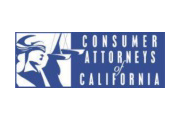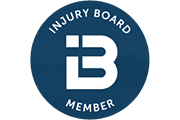By: George V. Choulos, esq.
While many lawyers believe that handling motorcycle cases is the same as handling automobile crash or premises liability cases, motorcycle crash cases are indeed very different, actually unique, and require particular knowledge of two-wheeled vehicle dynamics, as well as an awareness of societal prejudices against motorcycle riders. I’m reminded of the bumper sticker: “Skateboarding is not a crime!” Much the same, riding motorcycles is not a crime, is NOT socially reprehensible, and bikers are not per se criminals or insane risk takers. In fact, quite the opposite is true. Motorcycles take up less space on our roads, pollute less, and can get over 70 miles to the gallon. Despite decades of the cultivated and nurtured image of the rebel rider, or the dirty or violent biker, there is true social good accomplished by riding a motorcycle. There is even a valid argument in favor of the beneficial psychological effects of riding a motorcycle, which I shall not go into here.
Motorcyclists themselves are more comfortable in the presence of the attorney who understands the basics of motorcycle dynamics and function. Most lawyers, for instance, do not understand how to turn a motorcycle, or how a motorcycle really stops, or how the heck a motorcycle stays upright in the first place. We mustn’t presume the insurance adjuster understands any better, far less the jury! However, equipped with superior knowledge, the motorcycle trial lawyer can use this power to shed the light of truth on the righteous claims of his clients!
The Left turn in front of the biker case: Most attorney will usually be willing to accept a motorcycle case. Why? We all presume that if someone gets hit on, or crashes a bike-the rider or their passenger is truly likely to be hurt, often severely. With motorcycle cases, attorney don’t have to face the typical issues of “small impact” or low property damage-as we often do with automobile accident cases. Often, with motorcycle collisions, our clients have severe injuries, and we attorney need to be first concerned about the offending driver’s available insurance coverage.
So, what is the most common scenario or fact situation presented to the motorcycle accident attorney? It is the left turn by the auto or truck in front of the motorcycle scenario that most often presents itself. One well-known attorney who handles motorcycle cases has a slogan: “…because they just don’t see you…” Much has been written elsewhere about why drivers don’t see motorcyclists. Perhaps it is because the bike is smaller than the automobile or truck. Even with a constantly illuminated headlight, often times the car driver’s brain simply doesn’t send a signal to the right foot of that driver to NOT accelerate into, or in front of a motorcycle. Even if the driver does see the bike, he often thinks he can complete the turn in time. (And then blames the biker for speeding when he does not complete his turn and collides with the bike…)
The most common excuse by drivers who strike motorcyclists is “He just came out of nowhere!” The most deadly defense to a left turn case is the motorcyclist’s own speed. People are always ready to blame the motorcyclist for speeding since, to non-riders, bikes sound like they are speeding when they are idling, or passing you in first gear. Also, unfortunately for our reputation, many bikers blatantly speed and act recklessly or in ways that do not induce the love of the other users of the roadway. So, first and foremost, the motorcycle attorney must combat the assertion that the rider was speeding.
The attorney must secure any and all facts and evidence related to the best estimate for the speed of the motorcyclist IMMEDIATELY before the offending driver turned left in front of the motorcyclist. A careful analysis of the timing involved must be prepared, to demonstrate that the motorcyclist was riding in a safe and prudent, or reasonable manner, just before he was struck or cut off by the driver. It is not important at what speed the rider was traveling several blocks before the intersection where the crash occurred, if you can show that the rider was not speeding at the time he entered the intersection where the collision occurred.
Next, the attorney must analyze the lines of sight available to both parties. If the car or truck driver could have or SHOULD have seen the motorcyclist before they made the left turn, then the driver should have given that motorcyclist the right of way. If the motorcyclist saw or should have seen the car or bus starting to make the left turn and had time to avoid the crash, is the rider reasonable in continuing without slowing down, or does the rider share some of the responsibility for this crash? If the rider did not take reasonable steps to avoid the collision, this is called comparative negligence.
Usually, when a driver pops a left turn right in front of a motorcyclist it happens too suddenly for the rider to take effective evasive action. The case often comes down to how slow the left turn was, and how long the driver took to complete the turn. Did the car driver stop completely before making the left turn? Was the driver was using their turn signal? Ask if the rider had on brightly colored helmet and gear, so he was easily visible to the driver. If the collision occurred at night, was the motorcyclist’s headlamp functional? Were the automobile’s headlamps functional and properly adjusted? Where were both the parties looking at the time of the collision and just before the collision? If they had both truly been paying attention, then should the collision have occurred?
Strangely, we have had many cases where two riders were traveling together at night and a car driver lets one go before making the left turn, but turns directly in front of the second rider. Perhaps this is because the driver thought that they were looking at the headlights of a car and not two single headlights of two motorcycles.
Make sure that you know your local vehicle codes, and assert the violations by the offending drivers. Juries love your citing the violations of actual codes, and have a hard time resisting code violations even if they do not love bikers.
Police Reports almost always are against the motorcycle rider. The motorcycle attorney should not be discouraged, since most of the time, the poor injured motorcyclist was too injured to actually give a coherent version of the facts to the reporting officer. Because many police officers assume the worst when it comes to motorcyclists, it is particularly more important that the motorcycle attorney completes early and effective investigation.
As in any case, witness statements need to be locked down early! Take away the anticipated defenses mentioned above, such as speed and inattentiveness on the part of the rider, through the independent witnesses, if you can. It is vitally important to have a witness to support your contention that the offending driver made a quick left or “popped out”, as opposed to a slow and careful left that any reasonable rider should have avoided. Many times, the witnesses are initially adverse, and this is often just because they do not like motorcyclists, or think that all motorcyclists are crazy. These hostile witnesses are the most important, and your understanding of the dynamics of motorcycle riding and collisions is key to your cross examination of these witnesses. Most people who do not ride do not understand how bikes work or what happens to them in a crash. Your specific understanding of the dynamics of motorcycle operation will enable you to show how this witness simply could not have seen what they insist they saw. By getting the witness to commit to an impossible scenario, you have eliminated them as a credible threat to your client’s case.
It is clear that typical insurance adjusters do not understand motorcycles or how they perform in braking, turning or accelerating. They do not understand how bikes fall. It is up to the motorcycle attorney to educate the insurance claims representative how motorcycles operate, and why this particular motorcyclist is not guilty of comparative negligence. Your knowledge of motorcycle dynamics may enable you to explain also why the adverse witness simply cannot be right. Thankfully, even claims reps understand that real injuries occur when a car strikes a motorcycle. If you demonstrate that you know much more about motorcycle crash cases than the adjustor or the attorney they are likely to hire, the insurance carrier is more likely to want to settle to save the money and the time in fighting with you.
The early hiring of a qualified Accident Reconstruction Expert will most often make or break your motorcycle case. There are not many good ones, and so there is often a bit of a race to be first to get to the best ones! A competent expert can greatly help you make your liability case with a jury, especially in the face of negative witness statements, and an adverse police report. A good expert can educate you as to what most likely happened in this motorcycle crash, and enable you to cross-examine the hostile witnesses more effectively in deposition and in trial.
Armed with a plan, and taking all of the above into consideration, a motorcycle attorney should be able to win for his or her clients, each and every time a careless driver fails to yield the right of way and makes a left turn in front of a motorcycle rider.





